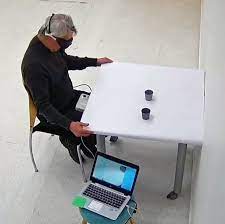Gene Therapy Used to Restore Sight to Blind Kids
Researchers have succeeded in using gene therapy to restore sight to nearly blind children, according to an article by Jean Bennett and colleagues of the University of Pennsylvania published last month in the journal Science Translational Medicine.
Five to seven babies are born each year with the progressive inherited disorder Leber’s congenital amaurosis which causes blindness in about 4,000 people in the United States., notes Bennett, a professor of ophthalmology at the University of Pennsylvania. “It’s probably one of the most severe forms of retinal degeneration, most severe because it affects infants, and it’s usually the parents who first notice that their children aren’t seeing the way most normal children do at approximately six weeks of age,” Bennett said.
LCA is caused by a single defective gene. This defect prevents normal function of the retina, the light-sensitive layer of cells at the back of the eye. This results in severely impaired vision from a very young age. No effective treatments are currently available.
In a clinical trial last year researchers injected a repaired gene into the retinas of a single eye of 12 subjects. The subject eyes began producing healthy cells. The subjects experienced a dramatic improvement in their sight in the treated eye. The improvement was most pronounced among younger patients whose vision had not completely deteriorated.
“They can now read books, sit in the front of a classroom and see what a teacher is writing on a blackboard and ride their bike around the neighborhood by themselves,” said Bennett, “whereas before they enrolled in the study, they were learning braille.”
Study participants have been asking to have their other eye treated but researchers are waiting for the green light to treat the second eye.
The most significant offshoot of this success is the possibility of using the technique to treat age-related macular degeneration which causes vision loss in more than 14 million older adults each year. The disease is the result of damage to the macula, a part of the retina in the eye, which results in central vision loss.
Several gene candidates involved in the disease have already been identified. Bennett says her study shows that using a virus to repair defective genes involved in the disease is safe.
Currently no gene therapy trials are under way to treat macular degeneration,


